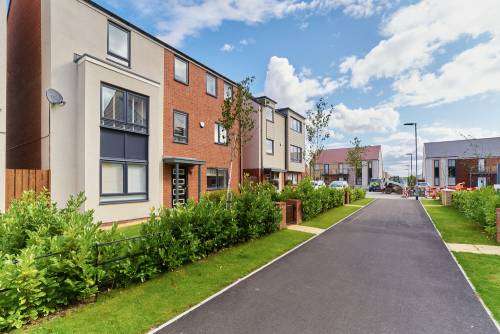
You may have heard of building guarantee insurance before, but are confused about the different options. Let’s take a look at what it is, the different types available and why you need this type of insurance.
What Is It?
Building guarantee insurance is also known as building warranty or structural warranty insurance, and is also sometimes called a latent defect policy.
This type of insurance provides cover for the cost of rectifying or repairing structural damage to a building. It applies to problems with a new build, a conversion or a completed build that may not be apparent at the time of completion.
Who it’s for
Although structural warranties are usually bought by the developer, the insurance itself will provide cover for the person who buys the completed building (the owner). The reason the developer purchases the warranty is because often there is a liability period where the developer is held responsible for the property before the risk is transferred to the insurance company.
Even if the builder will own the property and plans to live there after completion, they will still need a structural warranty policy in place. This is because regular buildings insurance won’t cover latent defects for the first ten years.
Duration
The insurance will usually cover you for eight to twelve years after the date of completion. Building warranties are important because they protect you from unexpected costs associated with structural damage to a property.
If you have this type of warranty in place, you’ll have peace of mind knowing that you will be covered financially if any problems arise. Whether it’s a new build, a conversion or a completed build, a building warranty is an extremely important consideration.
What is covered?
The type of damage covered by a building warranty usually includes:
- Damage caused by structural defects and ingress of water.
- Remedial work to prevent threat of collapse.
- Costs of dismantling, moving, storing and re-erecting property.
- Professional fees associated with the damage.
In addition, you can also include cover for component failure. This will protect you from the premature failure of non-structural component parts, for example wiring, boilers, pipe work or even kitchen units.
Different Types of Building Warranty
There are several different types of building warranties to suit a variety of circumstances.
New Home Warranty
This is designed for residential contractors who are building or converting private residential dwellings to sell. This can also provide cover for mixed-use developments as well as for a developer’s insolvency and alternative accommodation.
Social Housing Warranty
A Social Housing Warranty will cover Housing Associations for up to twelve years on either new build developments or conversions. This period of cover can be extended to a fifteen year warranty at no additional expense with a right-to acquire cover extension. Cover is usually also available for loss of rent.
Completed Housing
Completed Housing insurance provides cover for properties that have been built without having latent defect insurance in place. So if the property is already a few years old then this type of insurance will cover the balance up to ten years. For example, if the property is three years old, completed housing insurance can provide you with cover for the remaining seven years.
Simple Completion
Simple Completion insurance provides cover for a company or individual who is selling completed or partially completed homes which have been acquired through a developer’s insolvency.
Mortgage lenders require a Latent Defects policy on any property or building under ten years old. This type of warranty provides new site owners with the cover they need in order to meet this requirement of a mortgage lender, so they are able to sell their properties on the private market.
Self-Build

Self-Build Warranties are designed to cover individuals building their own properties. Self builders can take it out themselves or builders working on self-build developments can apply for this cover on behalf of their clients. This policy will provide you with cover in the event of damage caused by a defect in your property.
To qualify for a self-build warranty, you must be planning to live in the property for at least a year after completion of the build. If this is not the case, then you should get a New Home Warranty instead.
Private Rental / Build-To-Rent (PRS)
These warranties provide cover required by funders and institutional investors in purpose-built private rental properties. It’s a requirement that these investments are built to the correct standards and that they are properly insured in case structural issues occur. Structural problems could result in large fees for repair and maintenance expenses, as well as losses in yields.
A Private Rental warranty covers failures in design, workmanship and materials for up to twelve years after completion of the build.
Why Latent Defects Insurance is Necessary
Financial and legal protection against defects arising

The obvious reason you need a latent defects policy is to cover you financially and legally in the event that problems arise from any flaw in the build.
Building warranties cover you for up to twelve years after building is complete for a variety of defects, damage and failures. They protect the homeowner in this regard and they protect the developer or building contractor against any claims from the homeowner.
In addition to making sure your build is protected against these eventualities, there are also several other reasons that make latent defect or building warranty cover a necessity.
Mortgage lender requirements
Almost all mortgage lenders will require a Latent Defects policy or building warranty in order to lend money to buy a property under ten years old. So without a building warranty, you will be unable to sell your property. Even if you could sell a property without a building warranty, the ease and cost of obtaining cover would make much better financial sense in comparison with the legal fees and the time needed to make this happen otherwise.
If you have a rental portfolio and want to let your new build out long term, you will probably need to refinance. This will again mean that you need a building warranty in place in order to obtain the finance.
Other benefits
If you as a developer are planning on living in a property when the build is completed, a building warranty can actually save you money.
As well as protecting you as already discussed, it will also allow you to avoid paying the Community Infrastructure Levy (CIL) – a tax put in place by the Planning Act 2008 that came into force in 2010. This charge can easily come to over £50,000.
Considering that a building guarantee policy premium is less than half of that and will protect you from paying this levy, it could amount to a significant saving.
Hopefully you can see that building warranties are a necessity. They can give you peace of mind when it comes to living in a new build. They can cover you as a property developer or building contractor from being held legally or financially responsible if any latent flaws become apparent once building is complete. And they can also help protect your reputation.
At Construction Insure, we’ve been providing insurance cover to protect homeowners as well as property developers and contractors like you for forty years. Why not get in touch today and find out how we can help you get the right building warranty to keep yourself covered?

